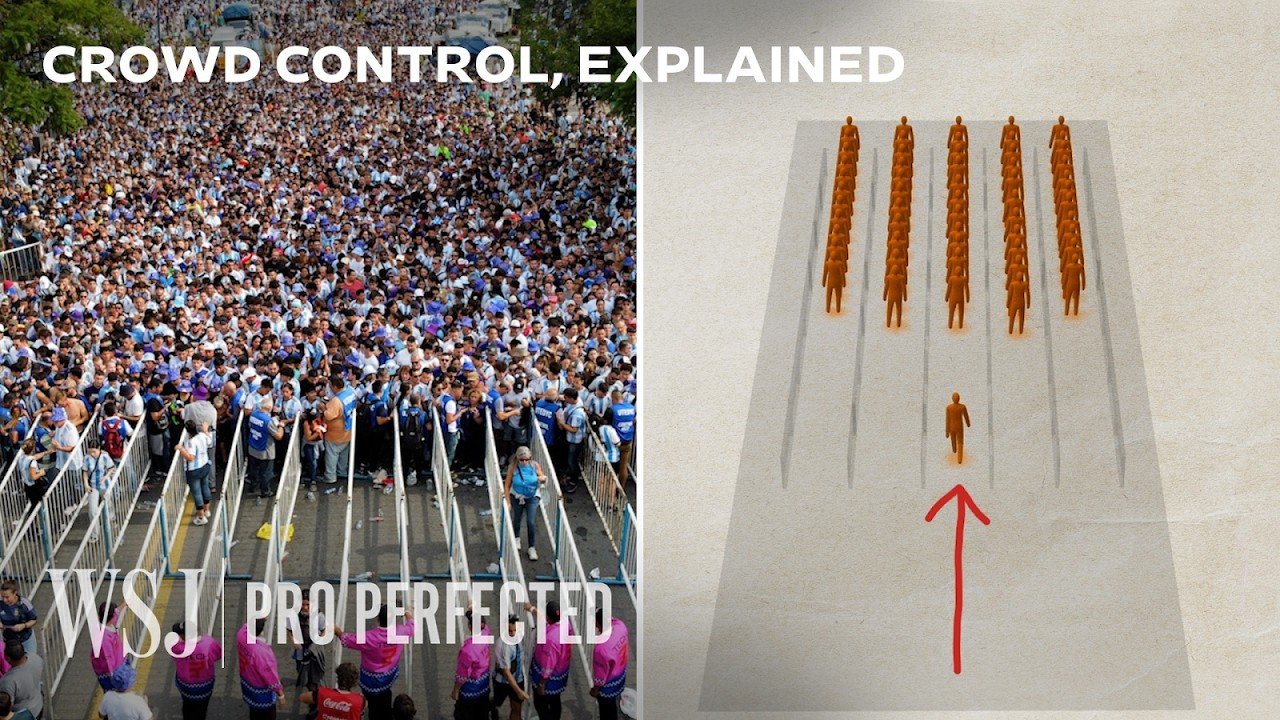The video delves into the intricate engineering and planning that goes into managing crowds at large events, focusing on ensuring safety, maintaining satisfaction, and optimizing revenue. It highlights the expertise and strategies used by professionals to control the flow of people during different phases of an event, including arrival, halftime, and departure. The aim is to manage the density and movement of crowds to prevent accidents, enhance the attendee experience, and increase sales at concession stands.
- Event layouts are meticulously engineered to guide crowd movement safely and efficiently.
- The planning aims to flatten the arrival curves, encouraging early arrivals through pre-event activities to reduce entrance crowding.
- Different queue systems, such as disorganized, multiple lane, and single lane (Disney queue), are employed based on space and event needs to improve entry experiences.
- Concession stand design is optimized to attract attendees, simplify choices, and speed up service to increase sales.
- Innovative solutions, like bottoms up beer taps, are used to reduce service time and boost revenue.
- Post-event crowd dispersion strategies involve directing attendees to various exits and transport options to avoid congestion.
- For the 2012 London Olympics, a system was designed to manage crowds through narrow paths by using pens to control the flow towards transport stations effectively.
- The success of crowd management lies in anticipating and controlling human behavior to ensure a smooth and safe event experience.
The Wall Street Journal is an American business and economic-focused international daily newspaper based in New York City. The Journal is published six days a week by Dow Jones & Company, a division of News Corp.
AllSides Media Bias Rating: Center
https://www.allsides.com/news-source/wall-street-journal-media-bias
Official website: https://www.wsj.com
Original video here.
This summary has been generated by AI.

Leave a Reply